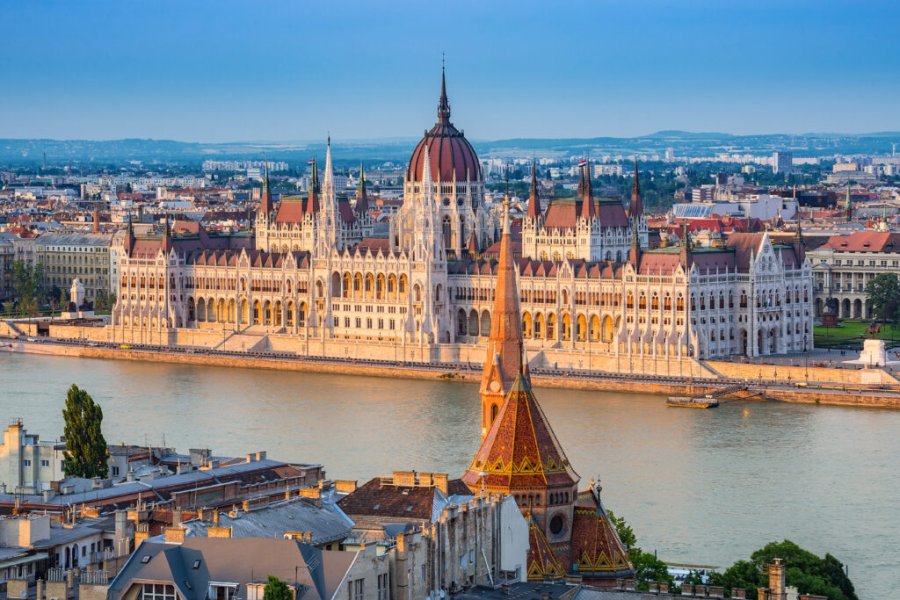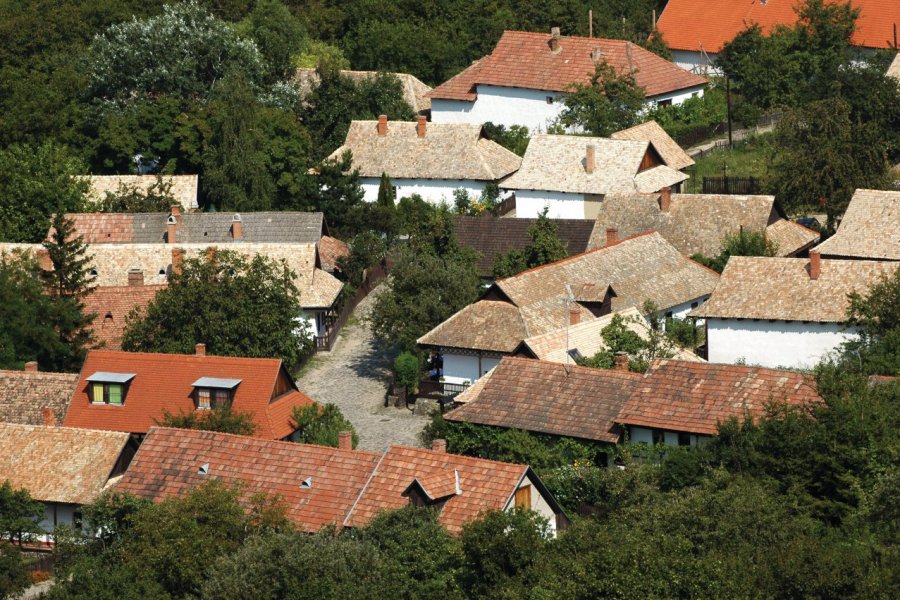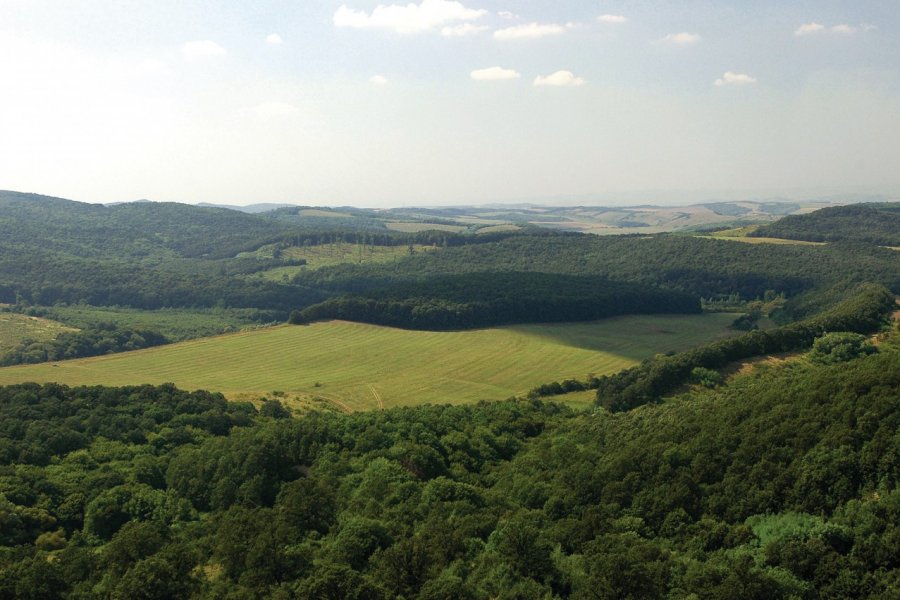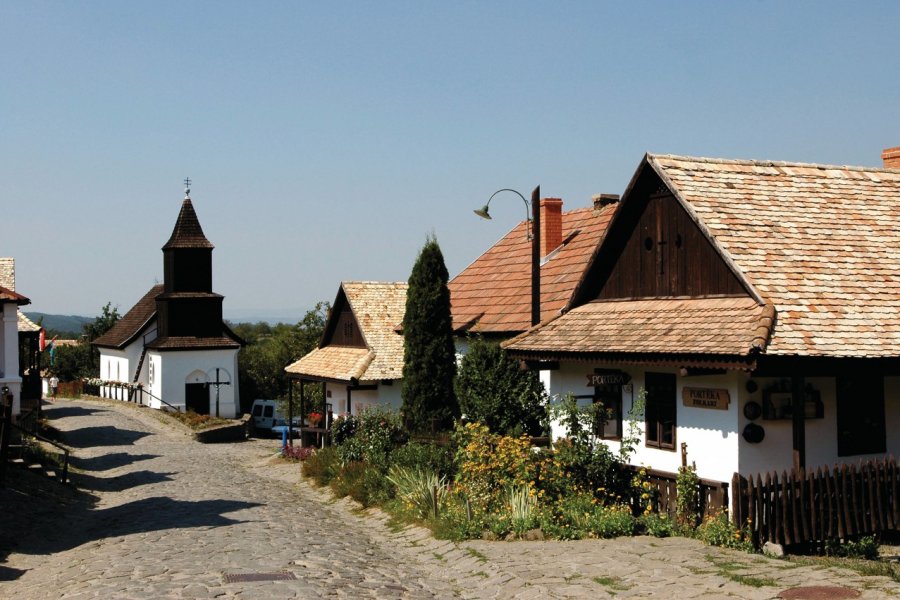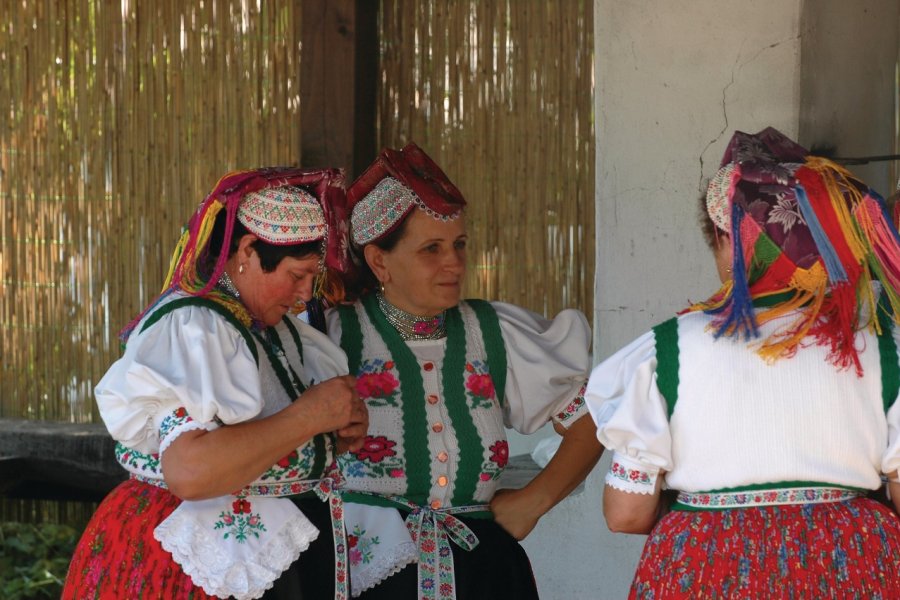Travel Guide Hollókő
Find an accommodation
Advertising
In Pásztó, take the small road heading towards the west, towards Hollókő, a museum village inscribed on the World Heritage List by UNESCO since 1987. The museum encompasses the entire old village (Ó falu), composed of 55 small protected traditional houses, grouped around the modest church. The village was completely restored, exactly as it was in 1909, before the last fire. Most of his homes are still inhabited. Hollókő was once known for its fortress of Szárhegy of the th century (still exists, even though there are still ruins), which stands towards the sky from the top of the hill to the steep slopes. The revolutionary Hussars Hussars met the lords of Nógrád and Hont there. The 450 inhabitants of the village are currently the last guardians of this central European folklore, which takes a very colourful turn here. Young women wear flowery fabric skirts, swollen as jour by a dozen petticoats. Hollókő's folk suit is distinguished from other costumes costumes by its large cap, in the form of a crown or diadem, from which long, floating and colourful ribbons are left. Men have more restrained costumes, consisting of a linen shirt under a tight jacket, high boots and a round hat.You have to cross the new village (finally, its few houses), before arriving to the old village palóc on both sides of Kossuth út, where time seems to have stopped in the Middle Ages. On Sundays and holidays, women still wear their colourful traditional costumes (especially if a tourist has just landed!). It is because of the isolated situation of the village in the Cserhát Mountains that its folk traditions and customs have maintained. This small site is the largest collection of popular Architecture in Hungary.In the old village, on both sides of the small street, the small and small peaks are lined with lime and carved wooden verandas. The main entrance of the traditional house overlooks this veranda. It leads directly to the main room, which serves as a kitchen and dining room. In winter, the benches, built in the fireplace, allow to rest on warm. The contiguous reception room, used only for large occasions, gives on the street. Table tops and beds are decorated with red or blue embroidery with geometric motifs. The attic is located at the back of the house. In the centre of the village is the th century church, also white, but surmounted by a beautiful steeple of dark wood. Another curiosity of the village is its roue. Some houses (Kossuth utca 82, 94, 99) were transformed into small ethnographic museums dedicated to the history and different aspects of palóc culture: sculpture and painting on wood, weaving, crafts, pottery, popular traditions, etc. Count 250 Ft/150 Ft Reduced rates per museum visited. Attention, most of these houses are closed from November 1 st to March 1 st where Hollókő is then completely sluggish… what is based on the hordes of tourists a little too present in summer.A council, if you are looking to see the culture palóc in its true day, astonishing, rural and authentically preserved, notify another village palóc than that of Hollókő and meet there one Sunday (day of mass) or, even better, a Christian religious feast (Easter and Pentecost preferably).
What to visit Hollókő?
Suggested addresses Hollókő
Weather at the moment
Advertising
Organize your trip with our partners Hollókő
Transportation
Book your plane tickets
Car Rental
Boat rental
Accommodation & stays
Find a hotel
Holiday rental
Find your campsite
Tailor-made trip
Immersion travel
Services / On site
Activities & visits
Find a doctor



